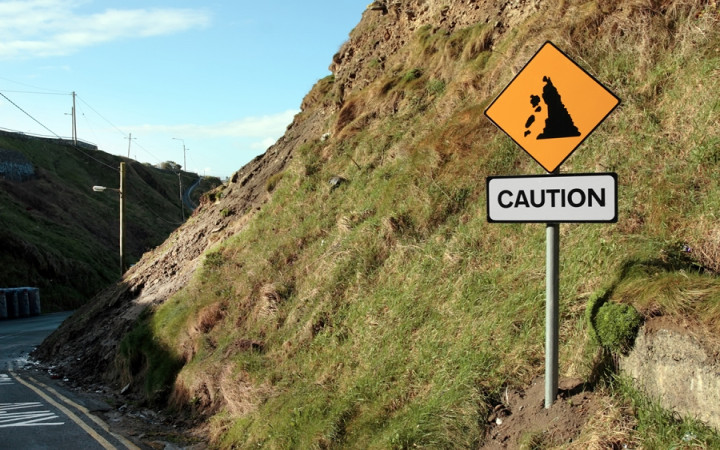Today’s Wonder of the Day was inspired by shae. shae Wonders, “how to mudslides occur” Thanks for WONDERing with us, shae!
Whenever a large group or rocks tumbles down a slope, geologists call it a landslide. When huge amounts of snow rush down the slope of a mountain, scientists call it an avalanche. So what do you call it when a huge flow of mud travels down a slope? You guessed it! A mudslide, of course!
Mudslides occur when a large amount of water causes the rapid erosion of soil on a steep slope. Rapid snowmelt at the top of a mountain or a period of intense rainfall can trigger a mudslide, as the great volume of water mixes with soil and causes it to liquefy and move downhill.
A mudslide can vary from very watery mud to thick mud with tons of debris, including large boulders, trees, and even cars or houses. Mudslides are responsible for many deaths and millions of dollars in property damage every year.
If you've ever stepped in mud, you know it can be very thick and clingy. It might be hard to imagine such mud rushing downhill at a great speed in order to do much damage. Don't be fooled, though! Mudslides usually contain a lot of water, and thus act more like a flood than a landslide. Mudslides have been known to rush downhill at speeds up to 50 miles per hour, laying waste to everything in the way.
For example, on December 14, 1999, a mudslide in Vargas, Venezuela, affected over 37 miles of Venezuelan coastline. Some experts estimated that up to 30,000 people died as a result of the mudslide, which resulted in damages of over $3 billion.
When discussing mudslides, experts will use certain special terms, including main scarp, shelves, and the “toe." The main scarp is the original area where the mudslide began. The “toe," on the other hand, is the last area affected by the mudslide. Shelves are areas where a mudslide's path crosses hills or natural drops, creating large dips. A large mudslide can have multiple shelves.
Mudslides often occur in areas with steep slopes or at the bottom of slopes or canyons. Mountainous areas that have been altered to build homes and roads are often prone to mudslides. When human actions or natural events, such as wildfires, increase erosion in an area, mudslides can be a natural result.
To protect yourself from mudslides, know the area in which you live. Have landslides or mudslides occurred before? If so, they can happen again. During periods of heavy rain, stay tuned to weather stations for alerts. If a mudslide warning is issued, make sure you can get to a safe area. High ground away from the path of a mudslide is where you want to be if a mudslide is imminent.




